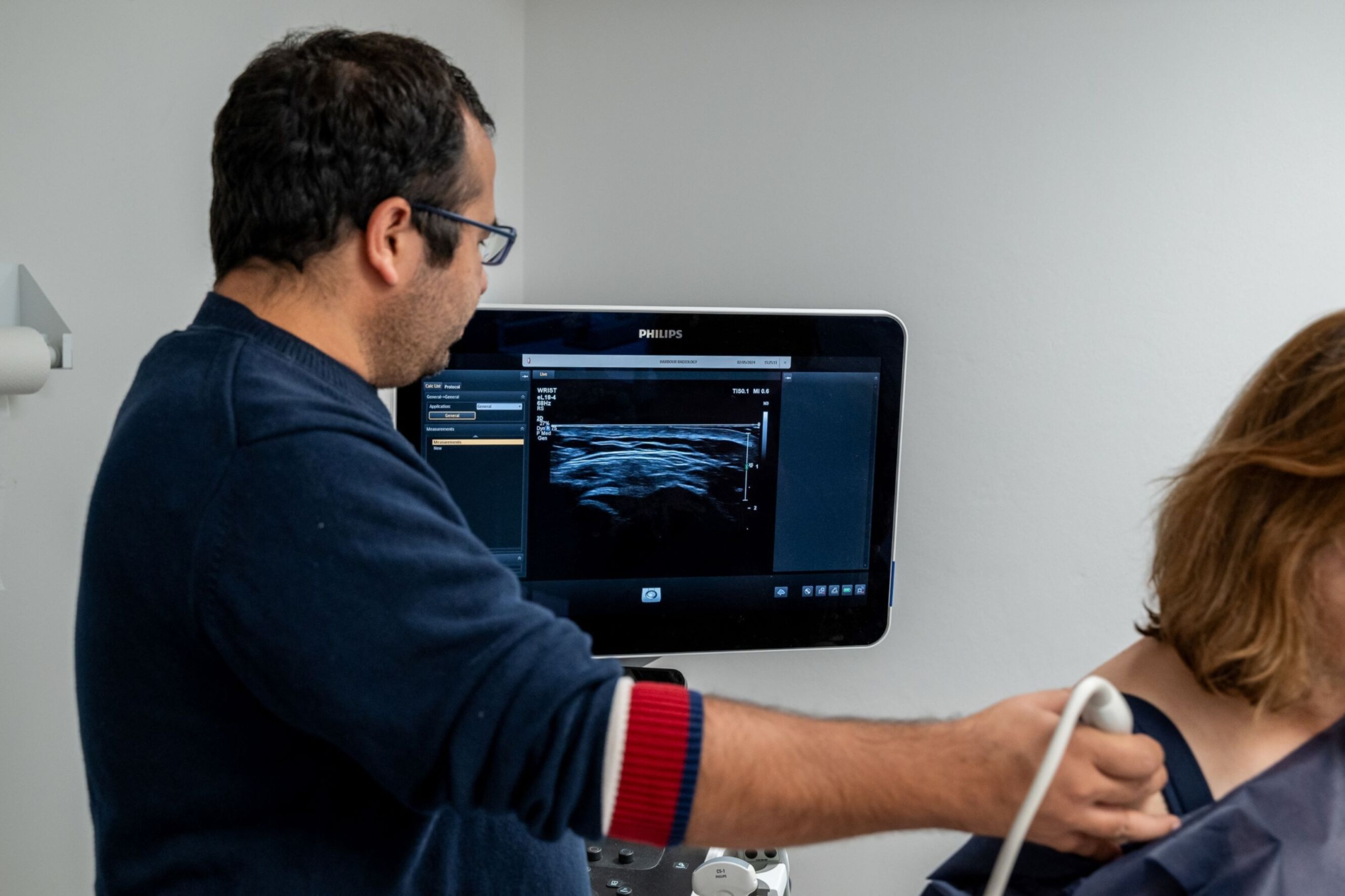
Fine Needle Biopsy for Breast Sydney
A fine needle breast biopsy is a minimally invasive procedure used to collect a small sample of tissue or fluid for examination under a microscope. With the guidance of real-timeultrasound, one of our highly experiencedRadiologists carefully inserts a very thin needle into the breast to remove the sample.
This type of biopsy is commonly performed to investigate breast abnormalities, and in some cases may also be used for areas such as the thyroid, lymph nodes, or liver. The procedure is carried out under local anaesthesia and is designed to cause minimal discomfort.
A fine needle breast biopsy is considered a safe and accurate method for diagnosis, often providing the information needed without requiring more invasive surgery.
How to prepare for a fine needle breast biopsy
In most cases, no special preparation is required before a fine needle biopsy in Sydney. Your Radiologist will give you clear instructions if any specific steps are needed, depending on the area being biopsied and your individual medical history.
How much does a fine needle biopsy for the breast cost?
All fine needle biopsies for breast have a $90 gap payment. In addition, the tissue samples collected during your procedure are sent to a specialist pathology laboratory for detailed analysis, which may incur a separate cost. Any pathology fees are billed directly by the laboratory.
Read more about our interventional radiology procedures.
Frequently Asked Questions
How long does a fine needle breast biopsy take?
The length of a fine needle breast biopsy appointment can vary depending on the complexity of the procedure and the area being biopsied.
On average, most fine needle breast biopsies take around 20–30 minutes to perform. This includes time for preparation, the biopsy itself, and post-procedure care such as applying a dressing and providing you with aftercare instructions.
Does fine needle breast biopsy have any radiation risks?
There is no radiation involved in a fine biopsy itself. The procedure is performed using ultrasound guidance, which is safe and does not use ionising radiation. In some cases, such as breast biopsies, a small marker may be placed to identify the biopsy site, and this can involve the use of a mammogram machine. This step uses a very low dose of ionising radiation and is considered safe.
Overall, fine biopsies carry minimal risk from radiation exposure.